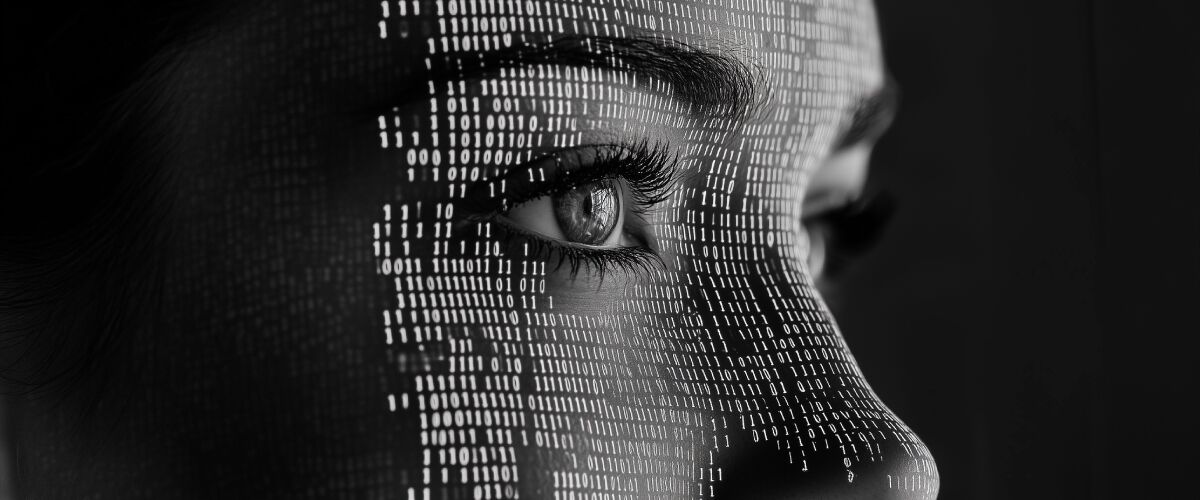Deepfake Deception: When AI Rewrites Reality
Did you know Hollywood star Nicholas Cage played Lois Lane in a Superman movie? Or that Facebook founder Mark Zuckerberg once boasted that the social media giant has “total control of billions of people’s stolen data?”
Both these statements are false. But they illustrate a pernicious trend: the use of artificial intelligence (AI) to create increasingly believable “deepfake” images, audio, and video.
“Seeing is believing,” the old saying goes. But is it really? Thanks to AI, it’s now possible to create images and videos of people that are indistinguishable from reality—even if those people or events never existed.
Free Wealth Protection Insights
Enter your email below to receive our weekly briefings on better ways to preserve your wealth, legally reduce your tax bill, and better protect what you’ve worked hard to build.
The Nestmann Group does not sell, rent or otherwise share your private details with third parties. Learn more about our privacy policy here.
PLEASE NOTE: This e-series will be delivered to you via email. You should receive your first message minutes after joining us. By signing up for this course, you’ll also start to receive our popular weekly publication, Nestmann’s Notes. If you don’t want to receive that, simply email or click the unsubscribe link found in every message.
This rise in deepfake deception is reshaping how we trust digital media.
How AI Creates Ultra-Realistic Deepfakes
We now live in an era where ultra-realistic videos can be created using AI, so convincing that they can fool even the most trained eyes. This is made possible by a type of AI technology called generative adversarial networks (GANs). GANs pit two AI algorithms against each other. One algorithm creates the fakes, while the other grades its efforts, teaching it to make more convincing versions. The process repeats until the grading algorithm can no longer distinguish between the fakes and the real thing.
To simplify, think of it as two artists competing: one tries to create a counterfeit painting, while the other examines the painting and points out the flaws. Over time, the counterfeiter learns to make flawless copies. That’s what GANs do with deepfakes.
This technological advancement means that audio and video records can be manipulated in ways previously unimaginable. The ability to manufacture such realistic fabrications represents a significant leap forward in AI’s capability to deceive, and the implications are profound. Deepfake technology has the potential to blur the lines between truth and fiction, undermining trust in what we see and hear.
Deepfake Technology Goes Mainstream
By 2019, deepfake technology was no longer limited to elite institutions or research labs. It had become available to the public through apps and software. Want to try deepfaking your own face? Download an app like FaceApp on your Android or iOS device. You could make yourself look younger, older, or even change your gender in seconds. This mass adoption of AI-driven editing tools is just the beginning.
Of course, the idea of modifying images is nothing new. Even back in the 1860s, when a photo of President Abraham Lincoln was altered by superimposing the body of former Vice President John Calhoun on it. Airbrushing—photo retouching to add or remove objects, deleting skin imperfections, etc.—eventually became commonplace.
By the 1990s, digital airbrushing using products like Adobe Photoshop became possible. In movies, combining separate pieces of film to replace part of a frame created special effects such as characters flying. This process rapidly grew in sophistication, producing the stunning special effects that are an integral part of movies today.
Now, AI is automating this process, pushing the boundaries of what can be manipulated without human intervention.
The Future of Deepfakes: What to Expect
As we entered the 2020s, experts warned that the influence of deepfakes would extend beyond entertainment into all aspects of society. The increasing sophistication of this technology was expected to have profound impacts on politics, media, and public trust.
How could deepfakes affect the future? Consider their potential impact on elections, corporate fraud, or personal revenge. Politicians could be falsely implicated in scandals, damaging their reputations in an instant. Criminals could create fake videos of CEOs confessing to crimes or framing individuals in compromising situations. The consequences of being at the center of a deepfake deception scandal could be devastating, especially as the technology improves and people struggle to distinguish real from fake.
The Rise of Virtual Humans: AI’s Next Frontier
We’re already accustomed to deepfakes in the movies. But AI makes it possible to extend deepfakes into every realm of existence.
Consider how easy it would be to create a virtual human starting with just a facial image created on a platform like This Person Does Not Exist. You could first create email addresses and social media profiles for this non-existent person. The virtual human could then begin spewing out tweets to support whatever political or social viewpoint its creators desire. It could be programmed to forward messages and respond to tweets.
Experts predicted that intelligence services would soon have the ability to create hundreds of thousands of virtual humans to influence public opinion at scale. Russia used crude versions of these techniques to influence the 2016 presidential election, and by 2020, much more sophisticated versions are expected to be used. US intelligence agencies are likely engaging in similar activities as well.
Imagine the potential deception: The creators of the virtual human could even use a generative adversarial network to manufacture biometric markers such as retinal scans and fingerprints. Paired with a stolen social security number from the dark web, virtual humans might soon become almost indistinguishable from real people. It could lead to fake passports, fake driver’s licenses, and even fake voter registrations.
How to Protect Yourself from Deepfakes
Ultimately, deepfakes are forcing us to question the very trust we place in digital media. As the technology improves, people will become increasingly reluctant to trust audio or video records presented as evidence. Those damaged by compromising digital recordings will simply dismiss them as fake news. This could take us back to an era where only what we personally witness is trusted.
Unfortunately, there is no easy technical solution to analyze the bits in a digital image, audio recording, or video to tell if it’s genuine. Hany Farid, who invented an AI technology to identify and block child pornography, says: “We’re decades away from having forensic technology that… [can] conclusively tell a real from a fake.”
Looking forward, cryptographic blockchains could play a role in solving this problem. The blockchain won’t be able to conclusively identify a digital record as real or fake. But it can create an unalterable record of the record’s metadata—when, who, and even where it was created. Once this data is on the blockchain, it can’t be altered and becomes part of a permanent ledger.
Improving Your Defense Against Deepfakes
While there’s no quick fix for the global deepfake plague, you can still take steps to protect yourself. Limiting the number of photos, videos, and audio clips you post online can deter all but the most sophisticated parties from creating deepfakes of you.
Additionally, you can stay aware of new tools that help detect deepfakes. Some AI-based programs are being developed to spot inconsistencies in deepfake content. Keep up with these emerging tools to help verify the authenticity of media.
And finally, consider limiting your digital footprint. The fewer digital records of you that exist, the lower your exposure.
Need Help?
Since 1984, we’ve helped more than 15,000 customers and clients protect their wealth using proven, low-risk domestic and offshore planning. To see if our planning is right for you, please book an introductory consultation with one of our Associates.













